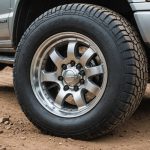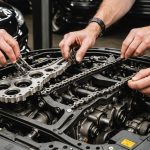Moisture poses a significant threat to the electrical systems in British off-road vehicles, leading to costly repairs and inconveniences. Protecting these crucial components from moisture is essential for optimal performance. This guide covers practical strategies and effective products, ensuring you can confidently tackle moisture challenges. Discover step-by-step methods to safeguard your vehicle's electrical system, extending its lifespan and improving reliability on rugged terrains. Fasten your seatbelt for expert insights that will keep your off-road adventures worry-free.
Understanding Moisture Damage in Electrical Systems
Moisture damage is a critical concern for electrical systems, especially in British off-road vehicles. These vehicles are frequently exposed to harsh environments, making them susceptible to various types of moisture damage. One common form is corrosion, which can weaken electrical connections and lead to system failures. Another issue is short-circuiting, caused by water penetrating the electrical system, potentially resulting in costly repairs or even vehicle inoperability.
Also to discover : Upgrading Your Classic British Car: A Step-by-Step Guide to Installing Adaptive Cruise Control
Electrical system vulnerabilities in off-road vehicles are particularly pronounced due to their exposure to mud, water, and other environmental elements. This exposure can lead to insulation degradation, where moisture seeps into cables and connectors, compromising their integrity. British off-road vehicles, often used in wet and muddy conditions, are at a higher risk of these vulnerabilities, necessitating robust moisture protection measures.
Neglecting moisture protection in electrical systems can have severe consequences. It may lead to frequent breakdowns, increased maintenance costs, and reduced vehicle lifespan. In extreme cases, it could pose safety risks, such as electrical fires or loss of control systems. Therefore, understanding and addressing moisture damage is essential to ensure the reliability and longevity of off-road vehicles. Implementing effective moisture barriers and regular maintenance checks can help mitigate these risks.
Also to read : Unlocking Enhanced Brake Performance: Simple Tweaks for UK Sports Cars Without Full System Upgrades
Essential Tools and Materials for Moisture-Proofing
When it comes to moisture-proofing electrical systems in British off-road vehicles, using the right tools and materials is crucial. Ensuring effective protection requires a combination of moisture-proofing tools and high-quality protective materials.
Recommended Tools for Moisture-Proofing
- Heat Shrink Tubing: Provides a secure seal around wires and connectors, preventing water ingress.
- Sealant Gels and Tapes: These are used to coat electrical connections, offering an additional layer of moisture resistance.
- Multimeters: Essential for regular electrical system maintenance, allowing for the detection of potential moisture-related issues.
Types of Protective Materials and Their Properties
- Silicone Gaskets: Known for their durability and flexibility, these gaskets form a tight seal against moisture.
- Waterproof Connectors: Designed to lock out moisture, these connectors are vital in preventing corrosion and short-circuiting.
- Corrosion-Resistant Coatings: Applied to vulnerable components, these coatings deter rust and prolong system lifespan.
Using quality materials is essential for effective protection. Inferior products might save costs initially but could lead to more significant expenses due to frequent repairs and replacements. Investing in robust moisture-proofing tools and protective materials ensures the longevity and reliability of your vehicle's electrical systems, safeguarding against potential moisture damage.
Step-by-Step Guide to Moisture-Proofing
Embarking on the moisture-proofing process for your vehicle's electrical system is a crucial step in ensuring its longevity and reliability. Follow these step-by-step instructions to effectively protect against moisture damage.
Preparing the Electrical System
Begin by thoroughly cleaning the electrical system components. Remove any dirt, grease, or old sealants that might hinder the effectiveness of new protective measures. Ensure that all surfaces are dry before proceeding, as moisture can compromise the electrical system protection.
Applying Protective Coatings
Select suitable protective coatings for your vehicle. Corrosion-resistant coatings are ideal for metal components, while silicone-based products work well on non-metal parts. Apply these coatings evenly, ensuring complete coverage to create a robust barrier against moisture.
Sealing Connections and Components
Focus on sealing all connections and components meticulously. Use heat shrink tubing to cover wire joints, providing a tight seal. Sealant gels and tapes can be applied to connectors, offering an additional layer of protection. Ensure that all seals are secure and check for any gaps that could allow moisture ingress. Regular inspection and maintenance of these seals are essential to maintain optimal protection levels.
Advanced Techniques for Enhanced Protection
To achieve superior moisture-proofing in British off-road vehicles, consider implementing advanced moisture-proofing techniques. These methods not only bolster the vehicle's defence but also enhance overall performance and reliability.
Upgrading Wiring and Connectors
Start by upgrading to moisture-resistant wiring and connectors. These components are specifically designed to withstand harsh environments, reducing the risk of corrosion and short-circuiting. Enhanced materials provide a robust barrier against moisture, ensuring long-term reliability.
Utilizing Heat-Shrink Tubing and Dielectric Grease
Incorporate heat-shrink tubing to secure wire joints and connections. This tubing offers an airtight seal, effectively preventing any moisture ingress. Additionally, applying dielectric grease to connectors creates a protective layer, repelling water and reducing oxidation. This combination ensures that electrical connections remain intact and functional.
Installing Moisture-Resistant Enclosures
For critical components, consider installing moisture-resistant enclosures. These enclosures provide an extra layer of protection, shielding sensitive parts from environmental exposure. By keeping moisture at bay, they help maintain the integrity and performance of the vehicle's electrical system.
By integrating these electrical system upgrades, you can significantly enhance the vehicle's moisture resistance, ensuring improved durability and performance in challenging conditions.
Preventative Maintenance Strategies
Preventative maintenance is crucial for ensuring vehicle longevity and effective moisture control in British off-road vehicles. Regular inspection routines are essential to identify early signs of moisture damage. Look for indicators such as corrosion on connectors, discoloured or frayed wires, and any noticeable moisture accumulation. Early detection allows for timely repairs, preventing further deterioration.
Conducting preventative maintenance involves several key steps. Firstly, schedule routine checks of the electrical system, focusing on areas prone to moisture exposure. This includes inspecting seals, gaskets, and connections for integrity. Replace any worn or damaged components immediately to maintain a moisture-free environment.
To enhance moisture control, ensure that all protective coatings and seals are intact and effective. Regularly apply sealants and corrosion-resistant coatings as needed, especially after exposure to wet or muddy conditions. Additionally, keep the vehicle's interior dry by addressing any water ingress promptly, such as sealing leaks around windows or doors.
By implementing these preventative maintenance strategies, you can significantly extend the lifespan of your vehicle. Consistent attention to moisture control not only preserves the electrical system's functionality but also contributes to overall vehicle longevity, ensuring reliable performance in challenging environments.
Recommended Products for Moisture-Proofing
When it comes to moisture-proofing products, selecting the right ones is crucial for ensuring the durability of your vehicle's electrical system. Here are some top-rated options that offer effective solutions.
Top-Rated Moisture-Proofing Sprays and Coatings
CorrosionX and WD-40 Specialist Water Resistant Silicone Lubricant are highly recommended for their excellent protective properties. These sprays form a durable barrier against moisture, preventing corrosion and extending the lifespan of electrical components.
Best Connectors and Wiring Options for Off-Road Vehicles
For connectors, Deutsch DT Series and Weather Pack connectors are renowned for their reliability in harsh environments. They provide a secure, moisture-resistant seal, essential for off-road conditions. When it comes to wiring, TXL Wire is a preferred choice due to its thin insulation and resistance to moisture and chemicals.
Comparison of Leading Moisture-Resistant Products
When comparing products, consider their durability, ease of application, and compatibility with your vehicle's system. While CorrosionX excels in long-term protection, WD-40 offers versatility for various applications. Similarly, Deutsch DT Series connectors are praised for their robust design, whereas Weather Pack connectors are valued for their ease of installation.
Real-Life Case Studies and Success Stories
Exploring moisture-proofing success stories offers valuable insights into effective strategies and solutions. These real-life examples highlight the benefits and challenges faced by off-road enthusiasts in protecting their vehicles' electrical systems.
Case Studies of Successful Moisture-Proofing Projects
In one notable case, a British off-road enthusiast tackled recurring electrical failures by implementing comprehensive moisture-proofing measures. By upgrading to waterproof connectors and applying corrosion-resistant coatings, they significantly reduced maintenance costs and improved vehicle reliability. This project underscores the importance of investing in quality materials and regular maintenance.
User Testimonials and Lessons Learned
Off-road community members often share community insights and experiences in forums and social media groups. One user reported success by using silicone gaskets and dielectric grease, which prevented moisture ingress during muddy expeditions. Their lesson: consistent maintenance and using the right products are key to long-term success.
Community-Driven Tips and Tricks
The off-road community offers a wealth of tips and tricks for effective moisture management. Enthusiasts recommend routine inspections and the strategic use of heat shrink tubing for added protection. These shared experiences help others avoid common pitfalls and enhance their vehicles' durability in challenging environments.
Resources and Further Reading
For those seeking additional resources and expert advice on moisture-proofing and vehicle maintenance, several avenues can enhance your understanding and skills.
Recommended Books and Articles
Explore literature that delves into vehicle maintenance, with a focus on moisture protection. Books like "The Off-Road Vehicle Maintenance Guide" offer comprehensive insights. Articles in automotive magazines often provide expert advice and practical tips for maintaining electrical systems in harsh conditions.
Online Forums and Communities
Engage with online forums such as Off-Road Enthusiasts and communities on platforms like Reddit. These spaces are invaluable for sharing experiences and gaining further reading recommendations. Community members frequently discuss challenges and solutions, offering real-world insights into effective moisture-proofing strategies.
Expert Blogs and Websites
Stay informed through expert blogs and websites dedicated to off-road vehicle maintenance. Websites like Off-Roaders.com provide updates and educational content on the latest moisture-proofing techniques. Regular visits to these sites can keep you abreast of new developments and innovative solutions in the field.
By leveraging these additional resources, you can deepen your knowledge and enhance your vehicle maintenance practices, ensuring reliable performance in demanding environments.










